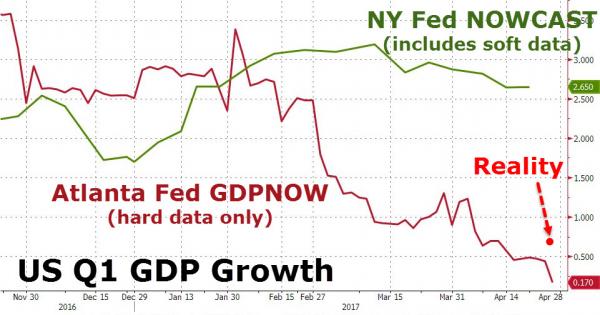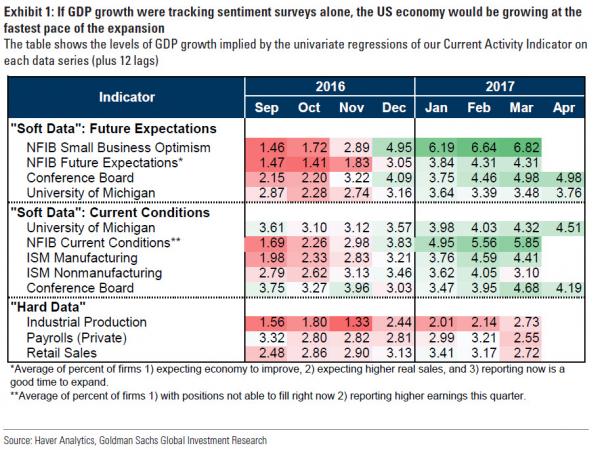If US GDP growth were tracking sentiment data alone, Goldman estimates the US economy would be growing at its fastest rate of the post-crisis period… But as many have seen – crushing the hopes and dreams of a multitude of over-confident asset-gatherers and commission-takers.

As Goldman Sachs’ Himmelberg notes, the music has yet to stop for market sentiment. Sentiment indicators are running extremely high among both households and small businessmen. While there are some signs of a peak in the sentiment surveys, the soft data are still near the highest levels of this expansion.

Exhibit 1 drills deeper into the soft data to see precisely where the improvements have been coming from. The cell values in this table (illustrated by the heatmap) show the levels of GDP growth implied by the univariate regressions of our broad CAI on each indicator (plus 12 lags). Both activity-oriented surveys (like ISM) and pure sentiment surveys (like NFIB Small Business Optimism) are running “hot”, while “hard” data indicators, like industrial production, are running cooler (although still quite strong). And the implied magnitudes of GDP growth are unrealistically high, with the Conference Board’s index of consumer expectations implying GDP growth of nearly 5%, and the NFIB’s small business optimism index implying growth of 6.8%.

Sentiment is running high in surveys of investor sentiment as well. The International Center for Finance at Yale School of Management surveys retail and institutional investors for their views on current valuations and one-year-ahead expected returns. In previous reports we have commented on the degree to which expectation measures have been running ahead of measures that survey current conditions. We can similarly use the Yale data to compare “expected one-year returns” to the assessment of “current market valuations”.
The patterns are remarkably similar. Just as in surveys of consumers and businesses, for investors (both retail and institutional), the post-election rise in expectations for year-ahead returns has materially outpaced their relatively sober assessments of valuation. As a result, the difference between the two survey questions – “expected returns” minus “current valuation” – is close to an all-time high.











Leave A Comment